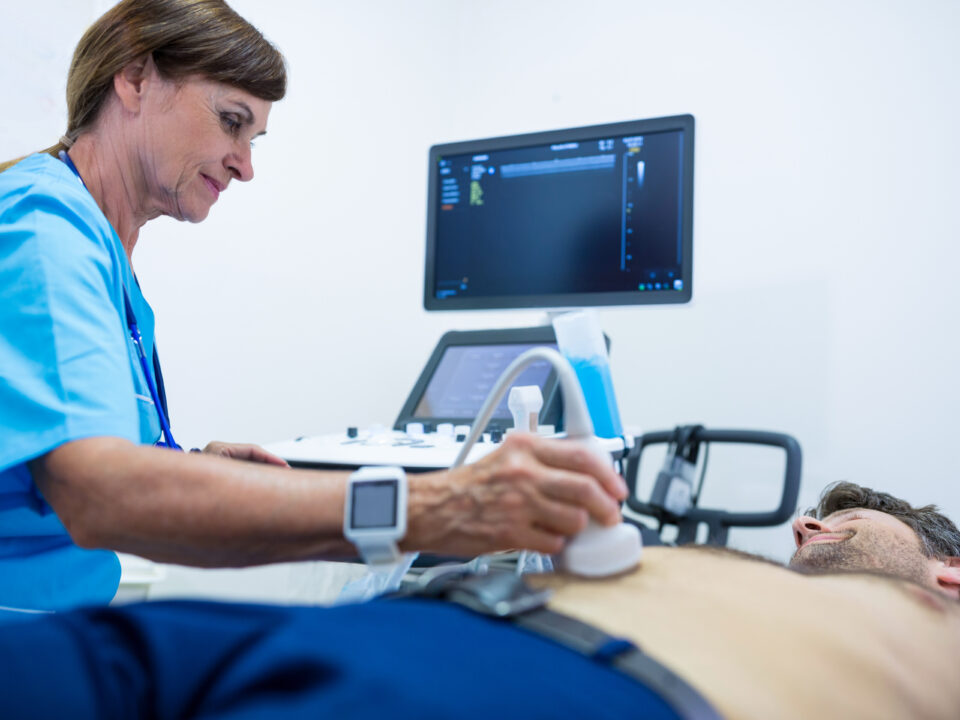- Immediate contact :
- +1-323-988-5889
- info@sonosif.com

Exploring Ultrasound Scanner’s Role in Elastography: Shedding Light on Muscle Blood Levels
February 23, 2024
Transforming Bladder Care: Real-time Urine Volume Monitoring Using Ultrasound in Wearable Systems
March 13, 2024Orofacial pain, particularly disorders affecting the temporomandibular joint (TMJ), poses a multifaceted diagnostic puzzle for healthcare providers. Traditionally, diagnosis heavily relied on clinical assessments and imaging techniques like magnetic resonance imaging (MRI) and computed tomography (CT). However, the evolution of medical technology has introduced ultrasound scanners as a valuable tool in TMJ evaluation.
Understanding TMJ Disorders:
The temporomandibular joint acts as a crucial hinge linking the jawbone to the skull. TMJ disorders encompass a spectrum of conditions affecting this joint, characterized by symptoms such as pain, limited movement, and clicking or popping sounds. These disorders can stem from various causes including trauma, arthritis, muscle dysfunction, or structural anomalies.
Diagnostic Challenges:
Accurate diagnosis of TMJ disorders is imperative for effective treatment planning. Nonetheless, traditional diagnostic approaches may present limitations. While MRI and CT scans offer detailed anatomical insights, they can be expensive, time-intensive, and not always readily accessible. Clinical examinations alone may not furnish adequate understanding of the underlying pathology.
The Role of the MLCD:
Ultrasound scanners have emerged as a promising adjunctive tool in TMJ assessment. By utilizing high-frequency sound waves, ultrasound imaging enables real-time visualization of soft tissues and structures within the TMJ area. This non-invasive method offers several advantages:
Dynamic Imaging: In contrast to static images provided by MRI or CT, ultrasound offers dynamic visualization of TMJ movement, allowing clinicians to observe jaw motion, assess condylar translation, and detect abnormalities in real-time.
Cost-Effectiveness: Ultrasound imaging generally incurs lower costs compared to MRI or CT scans, rendering it a cost-effective option for routine TMJ assessment, particularly in settings with limited resources.
Accessibility: Ultrasound scanners are widely available in medical facilities, enhancing accessibility for both clinicians and patients. This accessibility facilitates prompt diagnosis and treatment initiation.
Safety: Ultrasound imaging is devoid of radiation, posing minimal risk to patients, a crucial factor for pregnant individuals or those sensitive to radiation exposure.
Patient Comfort: The non-invasive nature of ultrasound scanning enhances patient comfort, reducing anxiety associated with traditional imaging techniques.
Diagnostic Applications:
the MLCD can aid in diagnosing various TMJ conditions, including:
Disc Displacement: Ultrasound imaging can identify abnormalities in the position or movement of the TMJ disc, a common feature in TMJ disorders. Muscle Dysfunction: Ultrasound facilitates assessment of the morphology and function of masticatory muscles, assisting in the diagnosis of muscle-related TMJ disorders such as myofascial pain syndrome. Inflammatory Conditions: Ultrasound can visualize inflammatory changes within the TMJ, such as synovitis or capsulitis, guiding appropriate treatment strategies. Arthritic Changes: Signs of TMJ arthritis, including joint effusion, erosions, and osteophyte formation, can be detected using ultrasound.
The integration of ultrasound scanners into the diagnostic toolkit offers valuable insights into TMJ disorders, complementing traditional imaging modalities and clinical examination. With its real-time imaging capabilities, cost-effectiveness, and accessibility, ultrasound holds promise in improving the diagnosis and management of orofacial pain, particularly in the realm of TMJ disorders. Ongoing research and clinical validation will further elucidate the role of ultrasound in optimizing patient care and enhancing outcomes in this challenging clinical domain.
Disclaimer: Although the information we provide is used by different doctors and medical staff to perform their procedures and clinical applications, the information contained in this article is for consideration only. SONOSIF is not responsible neither for the misuse of the device nor for the wrong or random generalizability of the device in all clinical applications or procedures mentioned in our articles. Users must have the proper training and skills to perform the procedure with each ultrasound scanner device.
The products mentioned in this article are only for sale to medical staff (doctors, nurses, certified practitioners, etc.) or to private users assisted by or under the supervision of a medical professional.




